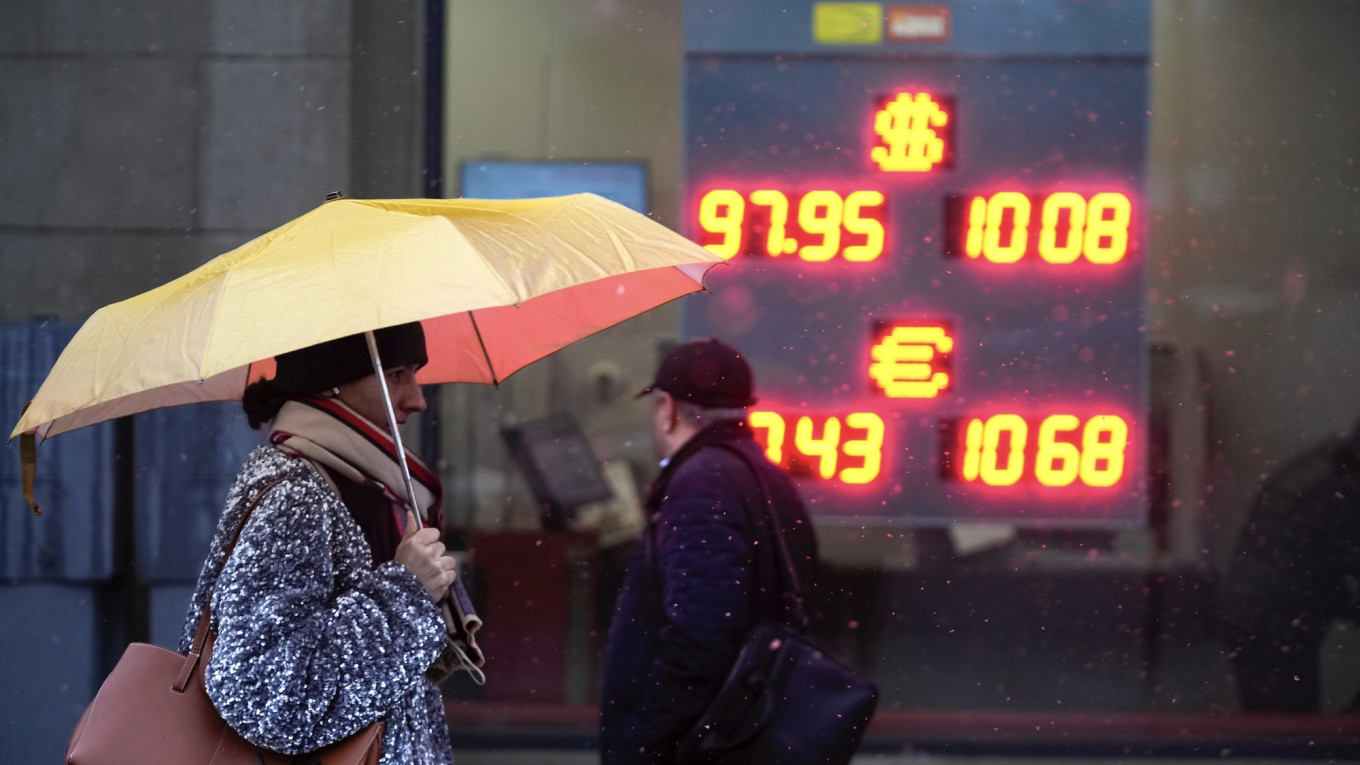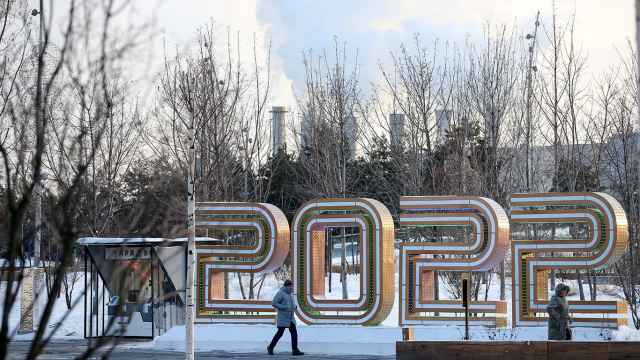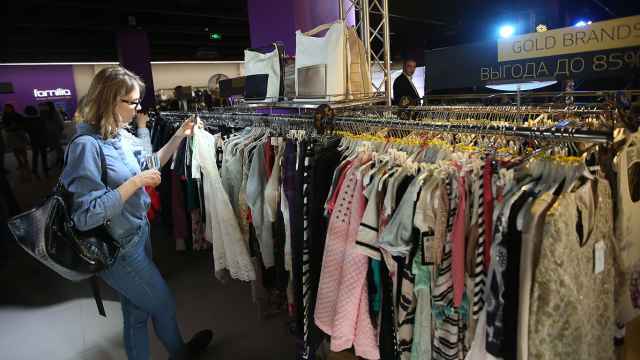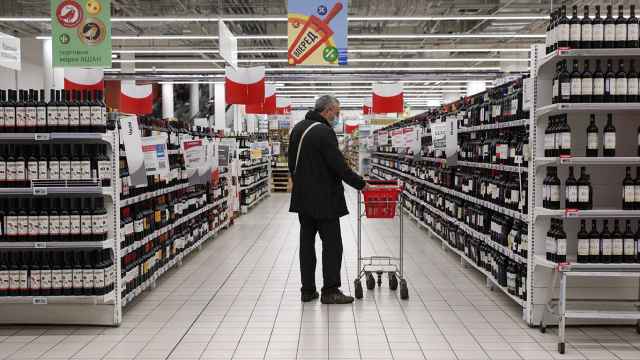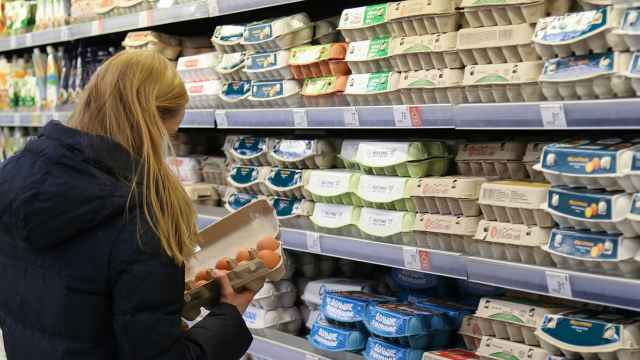Since the full-scale invasion of Ukraine, the Russian economy has repeatedly defied expectations. Predictions of a double-digit contraction never materialized. On the contrary, GDP grew by 3.6% in 2023 and an expected 4% in 2024: rates that both developed and developing nations might envy. Key indicators like GDP growth, household income, and low unemployment have become President Vladimir Putin’s trump cards. He brandishes them to the West as proof that sanctions are ineffective, and presents them to partners in Asia and Africa as evidence of Russia’s sound economic policies and the resilience of its development model. Chinese officials are apparently convinced, having reportedly established an interagency commission to study Russia’s economic model.
Yet this image of resilience is deceptive. Over the past two years, Russia’s economy has operated like a marathoner on fiscal steroids — and now those steroids are wearing off. Growth is slowing, key sectors are cooling, and the arguments underpinning Putin’s claims of economic “invulnerability” are unraveling. The Kremlin faces the mounting challenge of sustaining the war effort and funding social and infrastructure programs. Simultaneously maintaining low inflation and a stable ruble is proving increasingly unsustainable. Without significant course corrections, the current momentum may falter within a year. By 2026-2027, the fiscal and social challenges now on the horizon could fully metastasize into a crisis.
Since the invasion, Russia’s economy has relied on a unique combination of factors: record hydrocarbon export revenues, a market-oriented economic structure, a robust banking system, strict centralized governance and a lack of public consensus requirements. Such conditions are exceptional, even among authoritarian regimes, making the Kremlin’s economic model an anomaly rather than a replicable template for success. The foundations of this strategy are showing signs of erosion. The question is not if the cracks will spread, but how — and when — they will fundamentally reshape the Kremlin’s capacity to project power and maintain internal stability.
Steam without substance
The rapid expansion of government spending — both direct budgetary outlays and state-subsidized loan programs—has been the primary driver of Russia’s recent economic growth. From 2022 to 2024, the fiscal stimulus amounted to over 10% of GDP, while preferential loan portfolios in the banking sector surpassed 15 trillion rubles ($150 billion). This extraordinary expenditure has turned the military-industrial complex into the main engine of economic expansion. Yet cracks are becoming visible. By the third quarter of 2024, GDP growth had slowed to 3.1%, down from 4.1% in the previous quarter. While industries linked to defense production continue to grow, their pace is far below last year’s levels. Other sectors are faltering: extractive industries face declining production due to lower hydrocarbon export prices and OPEC+ production cuts, while agriculture has also lost momentum. Retail trade remains a rare bright spot, buoyed by consumer spending. However, surveys point to slowing business activity and rising inflation expectations among both businesses and households.
The limits of Russia’s production capacity are stark. Industrial facilities are operating at 81% of capacity, and 73% of enterprises report labor shortages. Unemployment has hit a record low of 2.3%, leaving an estimated 1.6 million jobs unfilled. In practical terms, the domestic economy cannot meet the demand driven by aggressive state and household spending, necessitating greater reliance on imports. This, in turn, increases demand for foreign currency, putting downward pressure on the ruble and fueling inflation.
Businesses are under growing strain. Falling global prices for coal and metals, combined with sanctions, have plunged the coal sector into real losses for the first time since 2020. This sector employs 650,000 people across thirty-one single-industry towns, where the shutdown of a single enterprise can paralyze an entire community, making its members prime candidates for government support. But other struggling industries—automotive manufacturing, non-food retail and housing construction — are also lining up for state assistance. Resources are stretched thin as stagnant oil and gas revenues, coupled with energy sanctions, limit budgetary inflows. While tax revenues have temporarily offset falling hydrocarbon income, they are consumed by current expenditures, leaving no surplus. By November 2024, the liquid portion of the National Wealth Fund stood at just $31 billion, its lowest level since the fund’s inception in 2008. That reserve is insufficient to meet growing demand.
At the same time, tight labor markets are driving wages higher, squeezing business profitability. Wage growth is most pronounced in industrial regions. The Kurgan region, home to Russia’s sole producer of armored personnel carriers, has seen salaries jump by 33%. The Volga and Ural regions, hubs for defense manufacturing, are close behind. However, this uneven wage growth is exacerbating regional inequality, a long-standing challenge that has only deepened since the war began.
Labor shortages remain a persistent bottleneck. For unskilled roles, Central Asian migrants could help fill the gap, but rising xenophobia — now entrenched in legislation — is curtailing immigration. In any case, Central Asian nations cannot provide all the trained professionals Russia requires. Moscow’s failure to invest in workforce development across the post-Soviet space has compounded the problem, leaving Russian industries ill-equipped to meet current demand.
The greatest losers in this overheated economy are Putin’s core supporters: public sector workers, including teachers, doctors, law enforcement personnel, and pensioners. Their wages and benefits are tied to official inflation rates of 9%, but real inflation for many households exceeds 20%. Meanwhile, the Central Bank has delayed its target of returning inflation to 4%, pushing it back to mid-2026 as Kremlin spending priorities crowd out monetary policy objectives.
Firepower supremacy
As 2025 looms, the Kremlin remains steadfast in prioritizing war, despite its ever-mounting costs. For the third consecutive year, military expenditure dominates the federal budget, but a unique aspect of this year is the near-exclusive allocation of additional state revenues to defense — at the expense of all other sectors. Defense and security spending will exceed 8% of GDP and account for 40% of total federal expenditure, a record not seen since the Soviet Union’s Cold War era. These funds are directed primarily toward two areas: arms production and military salaries.
The results of these investments are striking. Russia has doubled its production of armored vehicles and increased ammunition output fivefold at certain facilities. A new sector — mass production of military drones — has emerged, while funding for civilian drone programs has been slashed tenfold.
A significant portion of this budget supports Russia’s burgeoning force of contract soldiers. With the army requiring 20,000 to 30,000 new recruits monthly, the Kremlin relies heavily on financial incentives to attract men to the front. Average enlistment bonuses, supplemented by regional allowances, now stand at 1.1 million rubles ($11,000), with annual incomes ranging from 3.5 million to 5.5 million rubles ($34,000-53,000), depending on region and unit. These payouts place a heavy burden on regional budgets, with bonuses reaching as high as 2 million rubles ($19,000) in Moscow and 3 million rubles ($29,000) in the Belgorod region on the border with Ukraine. Such inflated sums reflect the shrinking pool of willing recruits, which is forcing authorities to offer additional incentives, such as debt forgiveness, university admission perks, and healthcare benefits for soldiers’ families. Direct federal spending on new recruits alone is estimated at 1.6-2.4 trillion rubles ($16-23 billion), not including additional costs for wounded soldiers and compensation for families of the deceased — figures obscured by classified statistics.
Although the federal budget outlines modest reductions in defense spending for 2026-2027, military expenditure will remain elevated even if the war in Ukraine ends in 2025. Replenishing depleted arsenals will be costly, especially as inflation drives up production costs. Moreover, the entrenched military-industrial sector, sustained by generous state subsidies, is unlikely to accept cuts without resistance. NATO’s expanding defense budgets provide further justification for Putin to maintain high military spending.
Meanwhile, “non-defense” budgetary allocations are stagnating or shrinking in real terms. Social services, national economic programs, and even internal security and law enforcement face funding cuts. Chronic underfunding and personnel shortages in Russia’s Interior Ministry and Federal Penitentiary Service are expected to worsen. Increased tax revenues — up 73% in 2025 due to higher levies on businesses and households — are being funneled almost entirely toward military needs, leaving little for other sectors. The resulting imbalance will further drain the civilian economy, slowing growth and exacerbating social inequalities.
When the active phase of the war ends, spending on soldiers will be among the first to face cuts. With over 3 million people, including their families, directly affected by military service, reductions in benefits and income will impact a significant portion of the population. Sustaining long-term support for this group will be beyond the Kremlin’s means, while withdrawing support for veterans is a risky business.
The massive payouts to soldiers and the broader surge in wages have created a paradoxical situation. While economic inequality has deepened, many Russians feel their standard of living has improved. Surveys indicate growing perceptions of a fairer distribution of income, with over 40% of respondents openly rejecting the need for personal freedoms or human rights, instead equating dignity with state-provided salaries and pensions. This sentiment may prove temporary, as inflation erodes the gains of war beneficiaries. But if it persists, it could cement a dangerous narrative: the association of Putin’s wartime leadership with prosperity and economic growth, and peace with decline and humiliation.
When the war ends, the challenges will fall to Putin’s successors. They will inherit an economy burdened by structural imbalances and a public disinclined toward sacrifice or reform. Businesses, too, will look back fondly on wartime “expanded demand” and the exodus of competitors, which left market gaps and undervalued assets in their wake. Yet the reckoning for today’s policies will come, leaving a fractured economy in which the much-vaunted macroeconomic stability of prewar Russia has already been sacrificed on the altar of conflict.
Russia’s economic tightrope
Two critical indicators highlight the instability of Russia’s economy: inflation, which has reached almost 9% since the beginning of 2024, and a key interest rate of 21%, which so far has done little to temper price growth.
The surge in inflation is fueled by domestic demand, primarily driven by state spending and rising wages among Russians. Domestic production struggles to meet this demand, necessitating higher imports and, consequently, increased reliance on foreign currency. This dynamic has weakened the ruble, which in late November suffered its sharpest drop, falling nearly 25% from its summer 2022 peak.
The government’s options to stabilize the ruble are limited. Half of Russia’s foreign exchange reserves remain frozen due to sanctions, while the remainder is reserved for potential threats to financial stability. Liquid assets in the National Wealth Fund are negligible, and with the key interest rate already at its peak, further hikes are unlikely. Compounding the challenge is the absence of foreign investors since 2022 and the capital controls introduced in 2023, which have undermined the effectiveness of monetary policy as a tool for exchange rate stabilization.
This situation exposes the structural constraints imposed by sanctions and the resource-based nature of Russia’s economy. No significant increase in foreign currency earnings is anticipated, as export volumes are constrained by geography — primarily shipments to China, India and other Asian nations — and by sanctions, which have inflated operational costs for logistics and cross-border transactions. The surplus in the current account is being consumed by rising expenditures, while the growing import dependency exacerbates the ruble’s weakness and, in turn, inflation.
Business profitability is further eroded by rising costs: increased tariffs on rail transport, electricity, and gas, as well as higher logistics expenses and the expanding scope of sanctions. As a result, resource exports are nearing their limits; opportunities for technological exports are negligible; and productivity growth is stifled by sanctions.
External assistance seems unlikely. Despite its substantial trade relationship with Russia, China has shown little urgency in stepping into the role of a technological partner. For the Kremlin, this leaves the economy precariously balanced, with no clear pathway out of its structural vulnerabilities.
The Authoritarian dividend
The structure of Russia’s market economy is steadily losing its flexibility under the weight of war and a centralized decisionmaking system that prioritizes control over dynamism. Subsidized sectors of the economy, insulated from interest rate fluctuations, are expanding rapidly. Beyond the military-industrial complex and its affiliates, preferential loans now underpin agriculture and real estate development as well. Meanwhile, the high key interest rate has significantly reduced corporate profits by driving up borrowing costs. Companies with heavy debt burdens face a dramatically increased risk of bankruptcy. Simultaneously, the Kremlin and the government are embracing a dirigiste approach to fiscal and monetary policy, increasingly dictating economic outcomes from above.
In Putin’s Russia, administrative costs for implementing policy decisions are remarkably low. Without public debate or opposition, the government can impose new taxes on individuals and businesses with minimal resistance. The public does not protest, and lawmakers in the State Duma vote as instructed. Major resource companies have already been subjected to extraordinary profit levies, such as Gazprom in 2022 and Transneft in 2024. Fertilizer producers, still active in global markets and largely untouched by sanctions, are likely next in line.
Consensus within the government’s economic bloc is not required; Putin alone determines the course of action. However, this centralized system carries hidden costs. The proliferation of emergency measures disrupts conventional management practices. Ad hoc decisions are becoming the norm, even in areas where institutional solutions could suffice. Policies increasingly prioritize immediate gains over long-term strategy. Complex, forward-looking initiatives are sidelined in favor of quick fixes. The lack of reliable information due to censorship and selective reporting undermines decisionmaking at all levels of governance, including in the highest echelons of bureaucracy.
The Kremlin has amplified these shortcomings by constructing a synthetic reality, particularly in response to sanctions. The government meticulously avoids highlighting disruptions to daily life, instead projecting an image of “business as usual” — or even improvement. For instance, the authorities have stopped publishing critical economic data, including figures on foreign trade, oil production and exports, and the financial health of banks and corporations.
This suppression of data extends beyond analysts and the public. Bureaucrats themselves face restricted access to accurate information, leading to sanitized reports that omit inconvenient truths. Over time, this fabricated narrative becomes the basis for governance. Far from a mere oversight, this distortion is a deliberate feature of Putin’s authoritarian system. While it offers short-term tactical advantages, it systematically erodes the foundations for sustainable growth and stability.
Despite revenue shortfalls, the 2025 federal budget includes a litany of extravagant projects, such as the construction of a high-speed rail link between Moscow and St. Petersburg and increased funding for import substitution in aviation. These initiatives suggest a government still behaving as though the economy is on steroids, even as the stimulative effects have largely dissipated.
The Post-2025 Future
Russia’s economic future beyond 2025 looks troubling. On the surface, economic growth and low unemployment create an illusion of stability for the country’s new economic model. However, this model is already confronting three fundamental limitations: a shortage of labor, exhausted production capacities, and stagnating export revenues due to sanctions. The storm of government spending is sustaining the current state of affairs, but it cannot address the chronic problems that have long plagued the Russian economy. The sanctions regime — partially mitigated by China, India, and other Asian countries — only serves to reinforce these old ailments. The transactional costs associated with sanctions weigh heavily on the entire economy.
Each passing month intensifies the pressure. The Kremlin is approaching a tipping point when the social contract between the state and the people will inevitably shift. Russians are increasingly being asked to accept rising inequality and a decline in quality of life in exchange for short-term stability and symbolic pride in the idea of a “fortress nation.” But even this compromise is becoming less and less sustainable.
A sudden collapse akin to the 1990s is unlikely: the government still has the resources to maintain a minimum level of order and control. However, we are already witnessing a largely irreversible turn toward economic stagnation. Continued reliance on the military sector and a mobilization-driven model will trap Russia in a “stagnation trap” characterized by low growth and chronic internal imbalances.
This article was originally published by the Carnegie Endowment for International Peace.
A Message from The Moscow Times:
Dear readers,
We are facing unprecedented challenges. Russia's Prosecutor General's Office has designated The Moscow Times as an "undesirable" organization, criminalizing our work and putting our staff at risk of prosecution. This follows our earlier unjust labeling as a "foreign agent."
These actions are direct attempts to silence independent journalism in Russia. The authorities claim our work "discredits the decisions of the Russian leadership." We see things differently: we strive to provide accurate, unbiased reporting on Russia.
We, the journalists of The Moscow Times, refuse to be silenced. But to continue our work, we need your help.
Your support, no matter how small, makes a world of difference. If you can, please support us monthly starting from just $2. It's quick to set up, and every contribution makes a significant impact.
By supporting The Moscow Times, you're defending open, independent journalism in the face of repression. Thank you for standing with us.
Remind me later.


